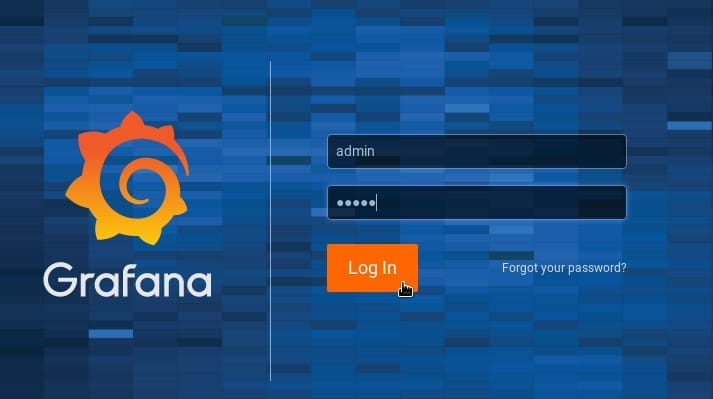How To Install Grafana on Ubuntu 24.04 LTS

Grafana has become an indispensable tool for data visualization and monitoring in modern IT infrastructures. This powerful open-source platform allows users to query, visualize, and understand their metrics, regardless of where they’re stored. For system administrators and DevOps professionals using Ubuntu 24.04 LTS, installing Grafana is a crucial step towards enhancing their monitoring capabilities. This guide will walk you through the process of installing Grafana on Ubuntu 24.04 LTS, ensuring you have a robust monitoring solution at your fingertips.
Prerequisites
Before diving into the installation process, it’s essential to ensure your system meets the necessary requirements. Grafana is relatively lightweight, but having adequate resources will ensure smooth operation. Here’s what you’ll need:
- A server running Ubuntu 24.04 LTS
- At least 2GB of RAM (4GB recommended for optimal performance)
- Minimum 10GB of free disk space
- A user account with sudo privileges
- Basic familiarity with the Linux command line
Additionally, ensure you have the following software dependencies installed:
wgetcurlapt-transport-https
These utilities are typically pre-installed on Ubuntu systems, but it’s worth double-checking. You can install them using the following command if needed:
sudo apt install wget curl apt-transport-httpsStep 1: Update System Packages
Before installing any new software, it’s crucial to ensure your system is up-to-date. This step helps prevent potential conflicts and ensures you’re working with the latest security patches. Open your terminal and run the following commands:
sudo apt update
sudo apt upgrade -yThe first command updates the package lists, while the second upgrades all installed packages to their latest versions. The ‘-y’ flag automatically answers “yes” to any prompts, streamlining the process.
Step 2: Add Grafana APT Repository
Grafana isn’t available in the default Ubuntu repositories, so we need to add the official Grafana repository. This ensures we get the latest version and can easily update Grafana in the future. Follow these steps:
1. First, import the Grafana GPG key:
wget -q -O - https://packages.grafana.com/gpg.key | sudo apt-key add -This command downloads the GPG key and adds it to your system’s trusted keys, ensuring the authenticity of the Grafana packages.
2. Next, add the Grafana repository to your system’s sources list:
echo "deb https://packages.grafana.com/oss/deb stable main" | sudo tee /etc/apt/sources.list.d/grafana.listThis command creates a new file in the ‘/etc/apt/sources.list.d/’ directory, telling APT where to find Grafana packages.
Step 3: Install Grafana
With the repository added, we can now install Grafana. Run the following commands:
sudo apt update
sudo apt install grafanaThe first command updates the package lists to include the newly added Grafana repository. The second command installs Grafana and its dependencies.
To verify the installation was successful, you can check the Grafana version:
grafana-server -vThis should display the installed version of Grafana, confirming a successful installation.
Step 4: Start and Enable Grafana Service
After installation, Grafana needs to be started and enabled to run at system boot. Use the following commands:
sudo systemctl start grafana-server
sudo systemctl enable grafana-serverThe first command starts the Grafana service immediately. The second command enables Grafana to start automatically whenever your system boots up.
To verify that Grafana is running correctly, check its status:
sudo systemctl status grafana-serverYou should see output indicating that the service is “active (running)”.
Step 5: Configure Firewall
By default, Grafana runs on port 3000. If you have a firewall enabled (which is recommended for security), you’ll need to allow traffic on this port. For systems using UFW (Uncomplicated Firewall), use the following command:
sudo ufw allow 3000/tcpThis command opens port 3000 for TCP traffic, allowing you to access the Grafana web interface.
If you’re using a different firewall, consult its documentation for the equivalent command to open port 3000.
Step 6: Accessing Grafana Web Interface
With Grafana installed and running, you can now access its web interface. Open a web browser and navigate to:
http://your_server_ip:3000Replace ‘your_server_ip’ with your server’s actual IP address or domain name. You should see the Grafana login page.
The default login credentials are:
- Username: admin
- Password: admin
Upon your first login, Grafana will prompt you to change the default password. It’s crucial to choose a strong, unique password to secure your Grafana installation.

Step 7: Secure Grafana with SSL
For production environments, it’s essential to secure Grafana with SSL to encrypt data transmission. While Grafana doesn’t natively support SSL, you can use a reverse proxy like Nginx to handle SSL termination. Here’s a basic outline of the process:
1. Install Nginx:
sudo apt install nginx2. Obtain an SSL certificate (you can use Let’s Encrypt for free certificates).
3. Configure Nginx as a reverse proxy for Grafana. Create a new Nginx server block configuration file:
sudo nano /etc/nginx/sites-available/grafanaAdd the following configuration, adjusting the server_name and SSL certificate paths as needed:
server {
listen 80;
server_name grafana.yourdomain.com;
return 301 https://$server_name$request_uri;
}
server {
listen 443 ssl;
server_name grafana.yourdomain.com;
ssl_certificate /path/to/your/certificate.crt;
ssl_certificate_key /path/to/your/certificate.key;
location / {
proxy_pass http://localhost:3000;
proxy_set_header Host $http_host;
proxy_set_header X-Real-IP $remote_addr;
proxy_set_header X-Forwarded-For $proxy_add_x_forwarded_for;
proxy_set_header X-Forwarded-Proto $scheme;
}
}4. Enable the new configuration and restart Nginx:
sudo ln -s /etc/nginx/sites-available/grafana /etc/nginx/sites-enabled/
sudo nginx -t
sudo systemctl restart nginxNow you can access Grafana securely via HTTPS.
Step 8: Basic Configuration and Setup
After logging into Grafana, you’ll want to perform some basic configuration:
- Add Data Sources: Click on the gear icon (⚙️) in the sidebar, then select “Data Sources”. Click “Add data source” and choose from the available options (e.g., Prometheus, InfluxDB, MySQL).
- Create Dashboards: Click the “+” icon in the sidebar and select “Dashboard”. You can either import pre-made dashboards or create your own using Grafana’s intuitive interface.
- Set Up Alerts: Navigate to Alerting in the sidebar to configure alert rules based on your data sources and metrics.
- User Management: For team environments, set up additional users and configure their permissions under the “Server Admin” section.
Troubleshooting Tips
If you encounter issues during or after installation, try these troubleshooting steps:
- Check Logs: Grafana logs are typically located at ‘/var/log/grafana/grafana.log’. Review these for error messages.
- Verify Permissions: Ensure the Grafana process has the necessary permissions to read its configuration files and write to its data directory.
- Restart the Service: Sometimes, a simple restart can resolve issues:
sudo systemctl restart grafana-server - Check Port Availability: Ensure no other service is using port 3000:
sudo lsof -i :3000
Congratulations! You have successfully installed Grafana. Thanks for using this tutorial for installing the Grafana monitoring and visualization software on Ubuntu 24.04 LTS system. For additional help or useful information, we recommend you check the official Grafana website.